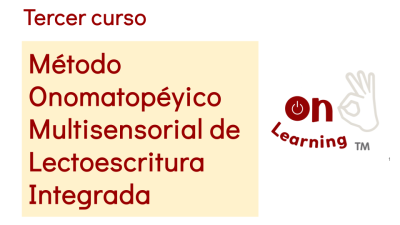Evaluation for 5.E.2b
Materials include teacher guidance to provide explicit (direct) authentic Spanish instruction on syllable division principles to decode and encode multisyllabic words depending on diphthongs, hiatus, syllable stress (sílaba tónica), word type and accent mark rules. (T)
The materials do not include a systematic sequence, as outlined in the Spanish language arts TEKS, for decoding and encoding multisyllabic words. In the "OnoPro Tarjetas de sílabas y morfemas," for example, in the section, "El objetivo de la instrucción," the materials describe activities for hiatos and diptongos that are intended for students to continue learning syllables, stress placement, and accurate spelling. However, the materials do not include instructional guidance in Spanish on syllable division principles, nor do they include a range of activities to practice and reinforce these skills both in isolation and within connected text. The materials lack explicit instruction for teaching syllable division, with no evidence to give students opportunities to understand and apply this knowledge in decoding and encoding activities. The "OnoPro Cartilla de lectura," for instance, includes the "Rutina de instrucción y diálogo maestro–estudiantes." This section does not provide clear language or steps for teaching syllable division principles necessary to decode and encode multisyllabic words. The materials offer no guidance for teachers on how to provide direct explanations of learning objectives, conduct modeling, facilitate guided practice, or implement independent practice. The materials do not include specific strategies for teaching syllable division to help improve students' reading and spelling. Materials lack the necessary support to guide students in breaking down complex multisyllabic words, including those with diphthongs and hiatuses, or in applying accentuation rules effectively. For example, the teaching lesson of palabras agudas states that palabras agudas are words with the strongest stress on their last syllable. They always get a written accent mark if they end in n, s, or a vowel, such as balón, papá, or canté. If they end in any other consonant, they do not get a tilde, even though the stress is still on the last syllable (e.g., calor, usted, conversar). The lesson does not include an explicit model of teaching. The materials do not include a variety of activities or resources authentic to Spanish for students to decode and encode words with morphemes in isolation and in authentic Spanish decodable connected text that builds on previous instruction. In the "OnoPro Cartilla de lectura," the affix sections present lists of words such as felicidad, agradable, desorden, and releer, but these are not embedded within connected text or reading passages. The materials do not provide guidance for students to break apart or manipulate these words during decoding or encoding tasks. There are no sentence frames, cloze activities, or explicit opportunities for students to apply morphemic knowledge in writing. The materials do not incorporate structured tools or prompts to connect word parts to meaning within extended reading or writing contexts.



